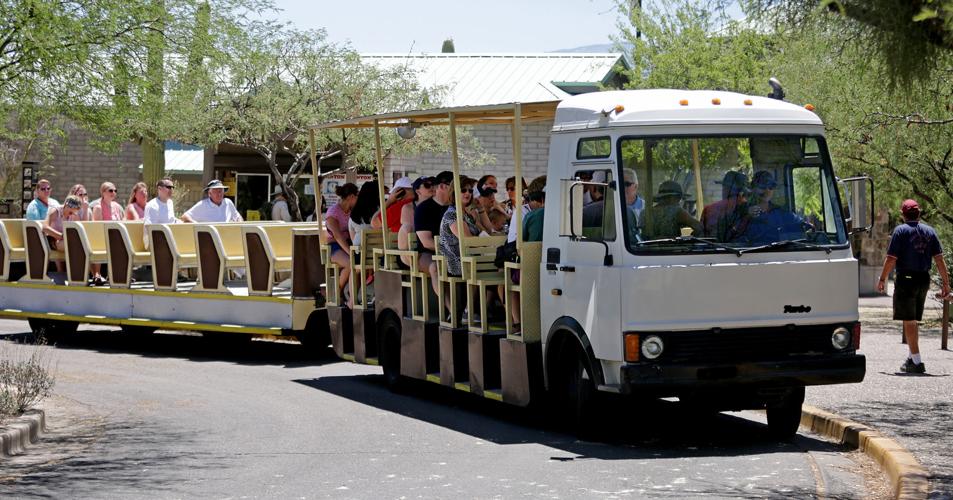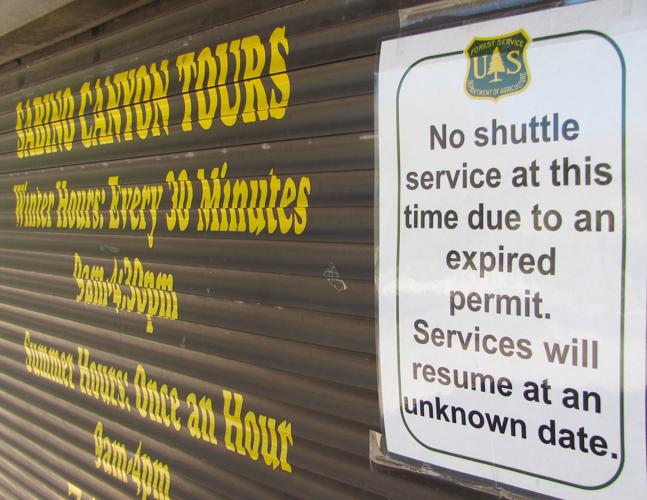A tourist shuttle service in Sabino Canyon was suspended June 30 pending a transition to a new operator, but Coronado National Forest officials say it’s still not known when shuttle service will resume.
Pressed to estimate a starting date, or at least a time period during which service would resume, forest spokeswoman Heidi Schewel said “Cannot answer at this time” with no further explanation.
Schewel also declined to estimate the cost of riding the shuttle under a new operator.
A sign posted at the shuttle ticket office in the canyon northeast of Tucson says only: “No shuttle service at this time due to an expired permit. Services will resume at an unknown date.”
NEW OPERATOR SELECTED
In March, Coronado Forest officials announced the selection of a new operator — Regional Partnering Center based in Tucson — to replace Sabino Canyon Tours Inc., a private concessionaire that had operated the system since 1985. Its permit expired June 30. A legal challenge to the selection has been filed by Sabino Canyon Tours, which has delayed the start of the new service.
Plans call for Regional Partnering Center, a nonprofit managed by the Pima Association of Governments, to gradually change the shuttle fleet from diesel and gasoline power to electric vehicles.
“The new shuttle system will evolve in four phases,” Schewel said, “concluding with a full fleet of electric shuttle vehicles with communications systems in enclosed passenger cabins, interpretive programs offered in several languages, and fully integrated ticket sales including cellphone payments and credit and debit card sales.
“Routes will carry passengers to Sabino and Bear canyons,” she said.
More than a million people visit Sabino Canyon every year and approximately 10 percent use the shuttle service, Schewel said.
Only two applicants — Regional Partnering Center and Sabino Canyon Tours — sought the permit for shuttle operation, she said when the selection of Regional Partnering was announced in March. The permit is good for 20 years.
Wildlife may be
more visible
For many of the people who enjoy walking up the canyon’s road and nearby trails, the gap in shuttle service temporarily eliminates concerns about passing shuttle vehicles or even minor noise.
Schewel emphasized the attractions of traveling into the canyon without a vehicular assist.
“Many recreational opportunities are available to those who venture a short distance into the recreation area, or to those who travel further in,” she said. “Picnic tables are available throughout the area. Trails vary in length from the short quarter-mile Bajada Loop Nature Trail near the visitor center to those that lead into the trail network through the Santa Catalina Mountains.
“Desert plants are rebounding from the dry spring with monsoonal rainfall,” Schewel said. “Wildlife may be more visible with reduced vehicular traffic. Birds are active, water is flowing, the desert is beautiful.”
She cautioned that pedestrians in the canyon should be aware that “storms upstream can send floodwaters cascading downhill into low-lying areas. Such areas should be avoided during and following storms.”







